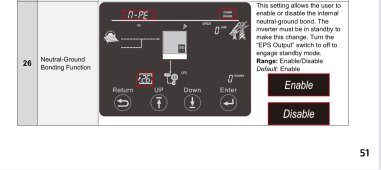I run two Reliance 510 transfer switches connected to my main panel that are fed by a 60 amp three pole switch. Output of the inverter goes into the three pole switch so in an emergency it can be thrown which will disconnect both L1 and L2 along with the neutral, completely isolating the inverter from the main panel. I removed the GFCI breakers from the main panel, replaced with normal breakers and installed 20 amp GFCI sockets at the head of the affected circuits. System works perfectly and gives me the option of being very selective of what runs on the utility, if anything at all. Only items here that remain on utility are the garbage disposal and the range hood. My panel is outside on a stucco wall so the Reliance units were a no brainer as a critical loads panel would have necessitated breaking out and repairing stucco, pulling wires through walls etc.



